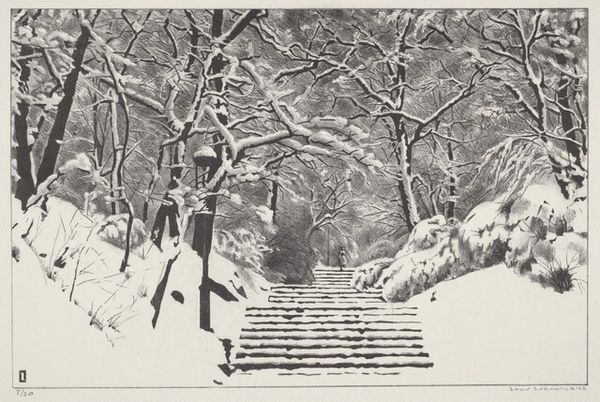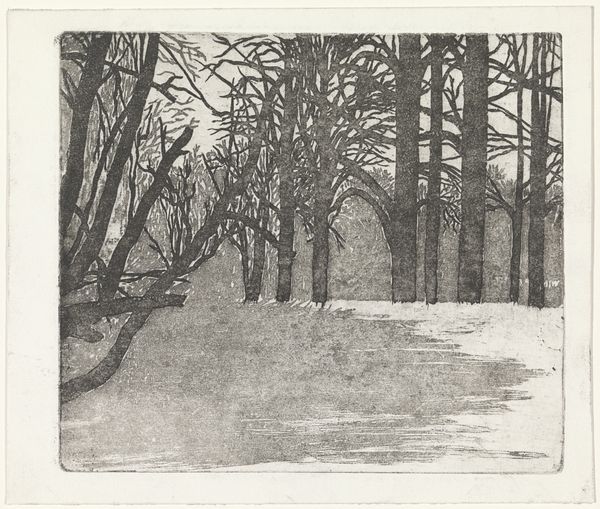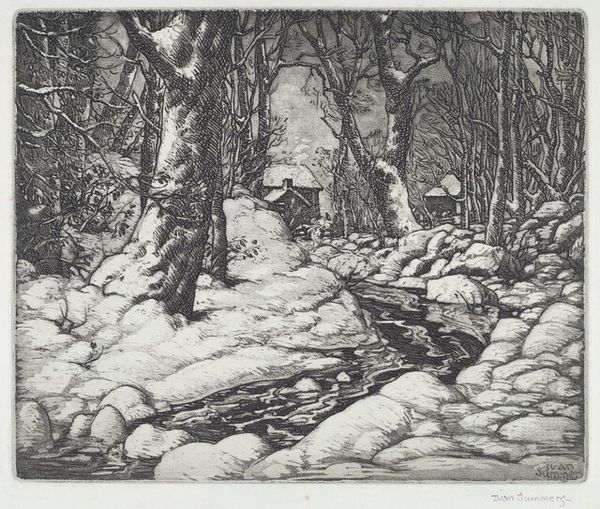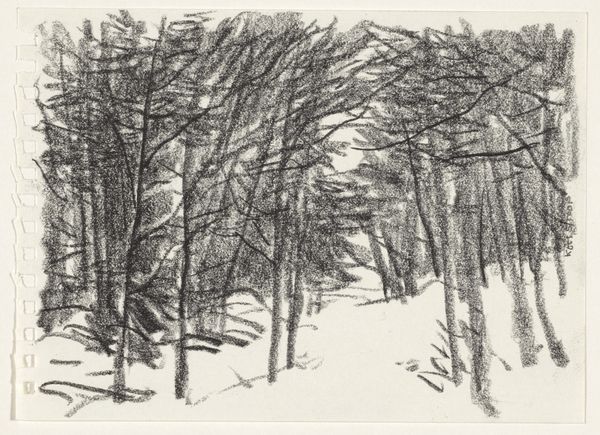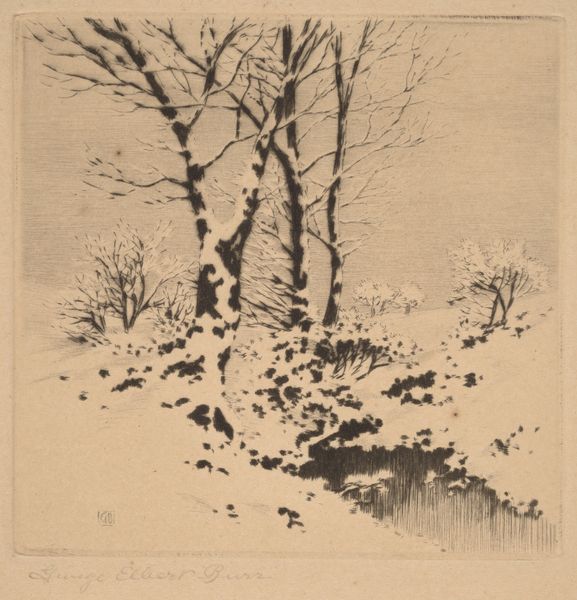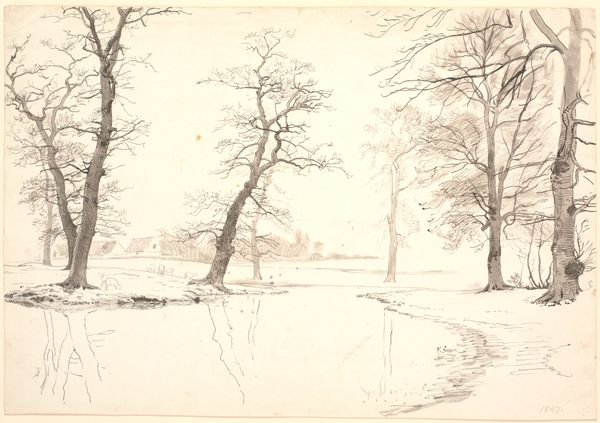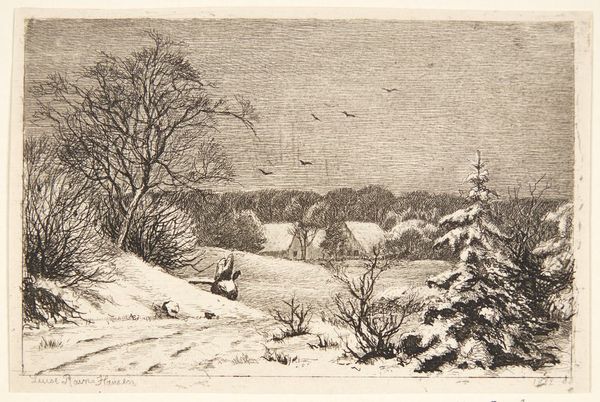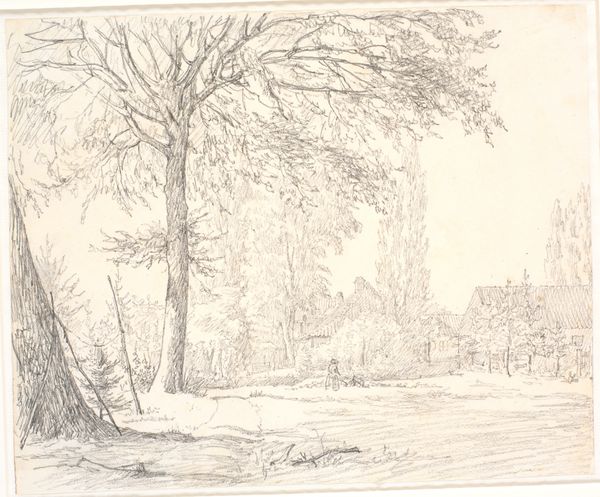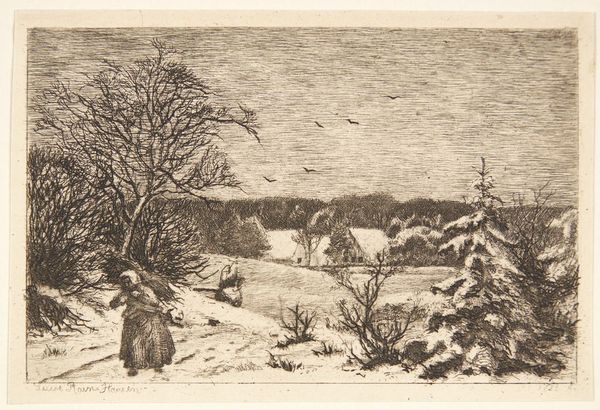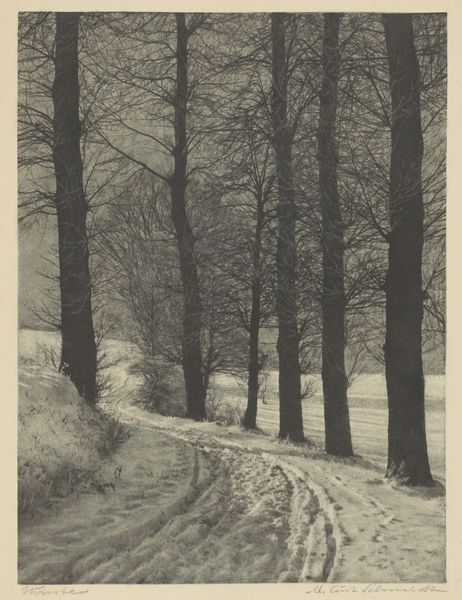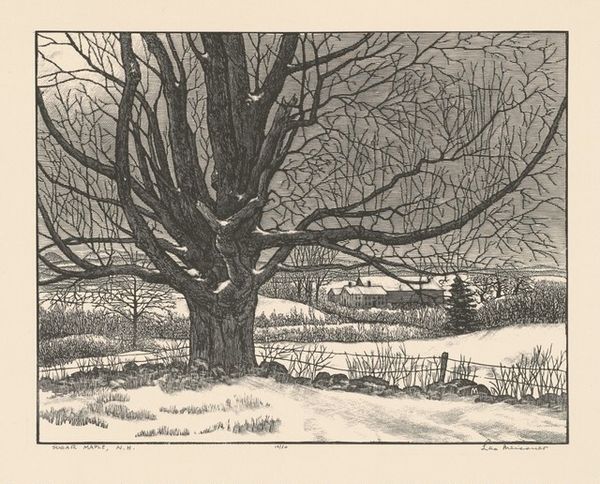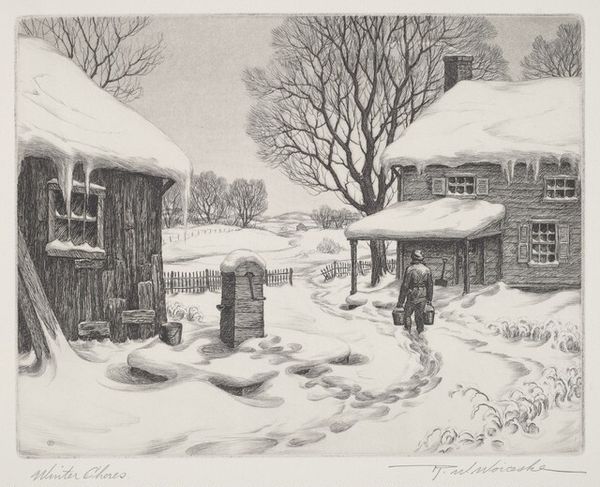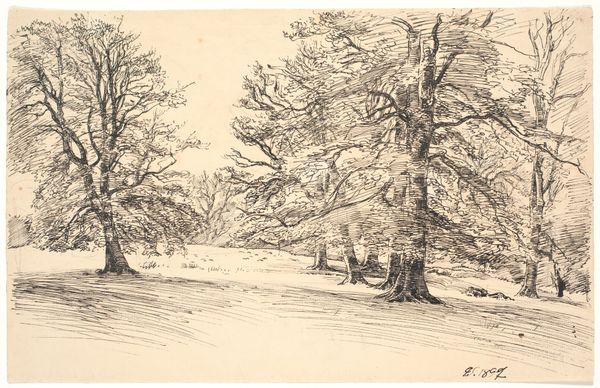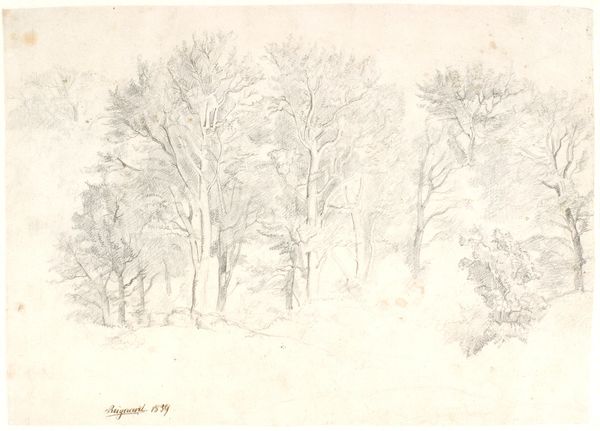
drawing, print
#
drawing
# print
#
landscape
#
realism
Dimensions: 120 mm (height) x 140 mm (width) (billedmaal)
Curator: This drawing, "Stenen ved skoven. Vinterdag," which translates to "The Stone by the Forest. Winter Day," was created in 1882. We attribute this Realist-style landscape to the hand of J. Hildebrand. It’s quite striking. What are your initial thoughts? Editor: Immediately, the sharp precision of the etching, rendering every twig and snowdrift, captures the austerity of winter. I’m fascinated by the physicality of the work – the labor involved in its creation, transferring the winter scene to this printed page. Curator: The gate itself seems almost symbolic – a border, a boundary between the known and unknown. Winter often represents dormancy and contemplation in art. Do you see a cultural resonance here? Editor: Absolutely. This piece seems particularly interested in the material experience of winter. Think of the biting cold and sheer whiteness; that’s a real experience transposed here through skilled application of ink. The texture invites an imagined touch, the cold of the bench, for instance. Curator: The stark realism heightens the symbolic value. One can almost feel the isolation of winter—but then I look at that rustic gate and want to step into the woods; it offers access. Do you believe Hildebrand offers a judgment on man's relationship to nature through its stark contrast to the softer wood? Editor: Hildebrand, like other Realists of this time, certainly was interested in representing a reality – in this case, perhaps the hard reality of a Scandinavian winter and life at that time. Curator: These stark images have staying power, reminding us of our enduring connections with cycles of life. Editor: Yes, and they compel us to reflect upon labor and materials, and the capacity of artists to transmute ordinary moments into lasting and enduring forms.
Comments
No comments
Be the first to comment and join the conversation on the ultimate creative platform.
